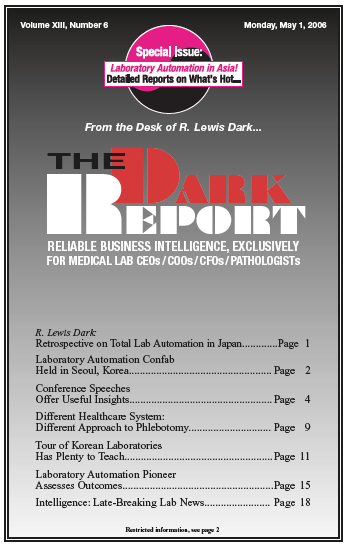CEO SUMMARY: It was the fifth “International Conference on Laboratory Automation and Robotics.” Over the past decade, this meeting, started by the pioneers of clinical laboratory automation, has been the major forum to meet and discuss advances in all aspects of automation. This conference is not widely-known in North America or Europe, although the conference …
Seoul, Korea Hosts Lab Automation Meeting Read More »
To access this post, you must purchase The Dark Report.


